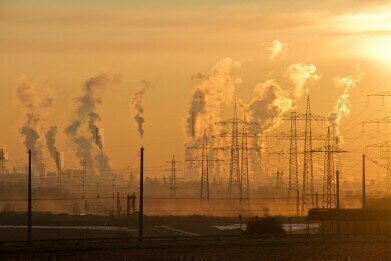Air Clean Up
Where is the Most Polluted City in the World?
Jan 02 2016
Up until recently, the booming economy of China and its accompanying exorbitant population made it perhaps the single biggest challenge facing environmentalists in the fight against climate change. At the beginning of the 2000s, 16 of the top 20 most polluted cities in the world were in China, and as recently as 2011, Chinese power plants emitted as much nitrogen oxides (NOx) as all of the passenger cars in the world combined.
However, over the past decade, China has slowly been addressing its problem, pouring more money into environmental monitoring and innovation than other nation. Meanwhile, India’s steadily growing economy and burgeoning industrialism has seen its emissions increase year on year. Currently the world’s third biggest polluter, it now contains 13 of those top 20 cities, including the top berth – New Delhi.
Why New Delhi is Number One
The reasons for the over-pollution of India in general and New Delhi in particular are manifold. With millions of Indians still languishing in poverty and the country’s infrastructure prone to frequent power outages, the need for a plentiful energy supply is there for all to see.
As a result, the Indian government and independent businesses are scrambling to harness the power of coal – the most pollutant of fossil fuels, which the rest of the world is attempting to wean itself off. However, while many developed nations (such as the US and most of Europe) has enjoyed the economic benefits of coal for decades, India has not been privy to such advantages. Therefore, the calls for India to move away from coal seem churlish and hypocritical to the government – despite the fact that we must act now to save the planet.
Indeed, it’s not just developed countries which are calling for India to curb its environmentally-unfriendly methods of energy generation. The V20, a conglomerate of 20 developing nations – many of which are small, low-lying islands most vulnerable to the adverse effects of global warming. The Indian government have appeared to be immune to such pleas, however, by signalling its intent to double its current extraction of coal to 1.5 billion tonnes by 2020. If its economy and its industry continue to grow at current projected rates, its CO2 emissions are expected to rise by more than 300% to a whopping 5.3 billion by 2030. While the rest of the world is attempting to curb its harmful emissions, India seems set to increase its output several times over.
Remediation Efforts not Enough
Of course, the clogged roadways of New Delhi are another contributing factor to its air pollution. In 2013, air quality in the Indian capital was called "very poor" for the first time; that level has now risen to severe. Contrastingly, levels in Beijing have been on an opposite trajectory – despite the Chinese capital calling its first ever ‘red alert’ on smog last month.
In an attempt to make a dent in its transport emissions, Indian chiefs have implemented a decree alternating the days on which odd- and even-numbered license plates will be allowed on the streets in New Delhi, from January 1st next year. Such a measure may be too little too late – if it even works at all. Certain experts have suggested that police will have a hard time enforcing the rule and the already overcrowded public transport system will be utterly unable to deal with the surplus demand.
With the signing of the COP21 agreement less than a month old, it’s clear that every nation and city around the world must do its part to fight climate change – including and especially the most polluted city on Earth. Whether or not New Delhi will live up to its responsibilities remains to be seen.
Events
Apr 22 2024 Hannover, Germany
Apr 23 2024 Kuala Lumpur, Malaysia
Apr 24 2024 Sao Paulo, Brasil
May 05 2024 Seville, Spain
May 13 2024 Munich, Germany














